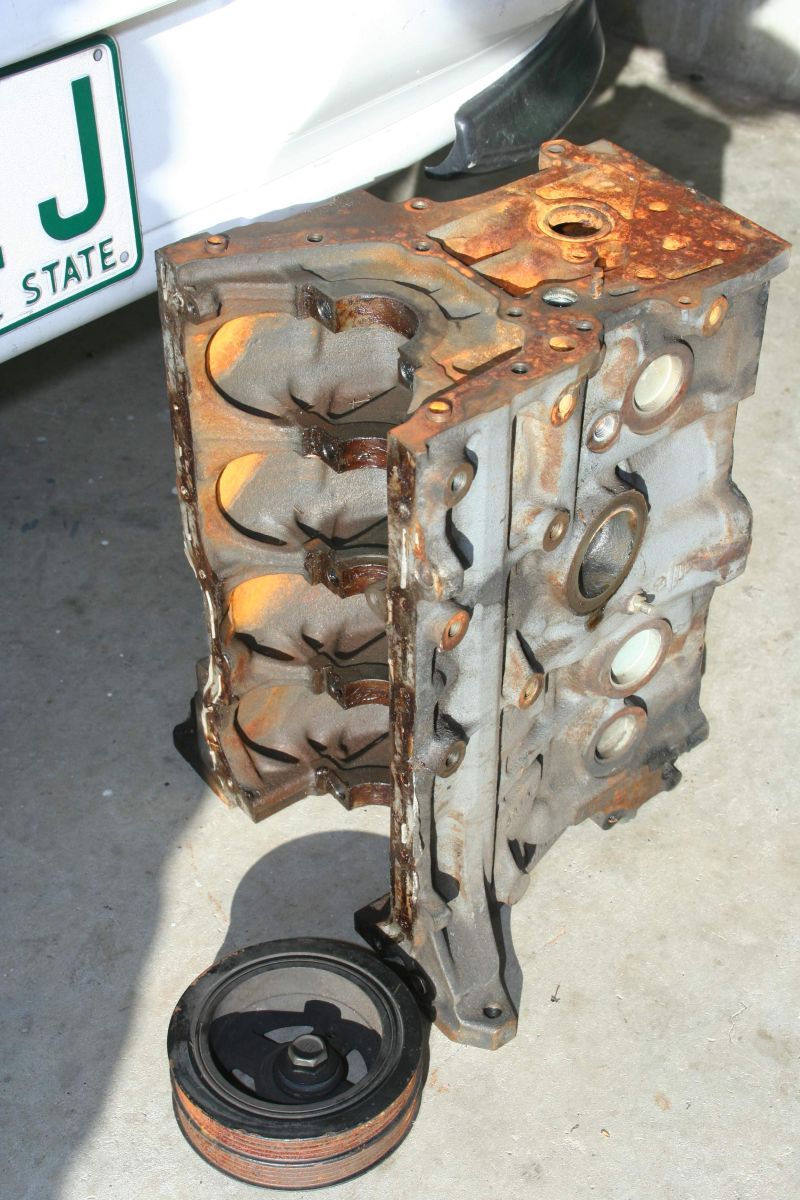aging is usually referring to a process where a precipitate phase grows over time.. ie aluminium alloys.. they are often heated to speed the natural aging process.
for cast iron blocks, some say that blocks settle over time.
seems a bit odd that a cast iron block would age outside, and not when being run at higher temperature in a car?
after casting, there may be some residual stresses, but if these actualy make any difference in service i cannot say (uually to do with bore roundness i suppose?)
stress relieving could be done by heating the block to some temperature that allows any dislocations to move around, and holding long enough for them ro either hit grain boundaries or otherwise tie themselves up.
doing this also risks damaging the block if thermal expansion actualy causes more stress than it is meant to relieve.. and then restresses itself upon cooling....
when searching, look for "cast iron" "stress relief" etc... aging will mostly just get you aluminium... ou could try seasoning? i suppose some oldies use that term





 Reply With Quote
Reply With Quote
 ) JZX83 (Tyre eater) 3sgte AE86. by now i should know better.
) JZX83 (Tyre eater) 3sgte AE86. by now i should know better.
 ?
?


Bookmarks